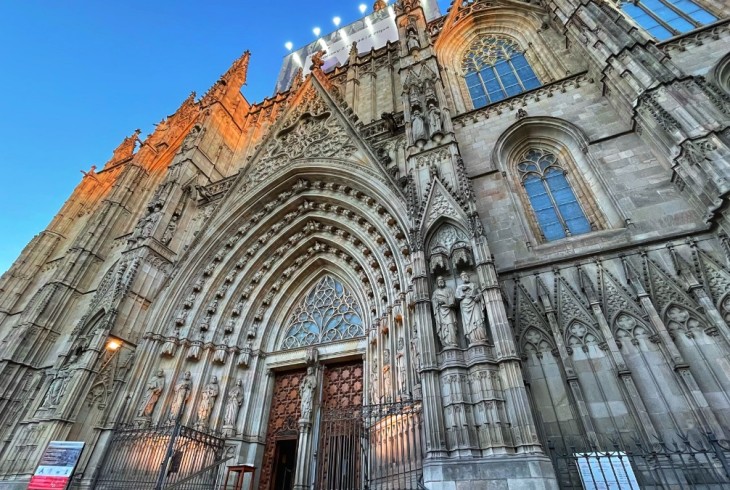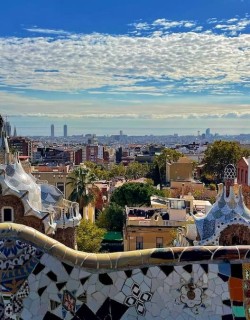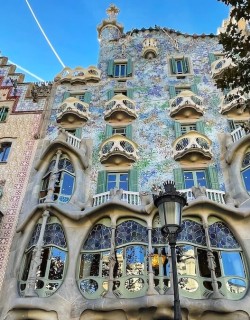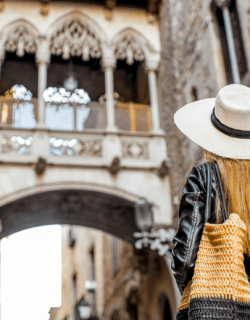Barcelona’s rich Gothic heritage is everywhere you look in the Catlonian capital. The city’s historic centre is a beguiling tangle of medieval alleyways and imposing stone buildings that seem to transport you back to the Middle Ages, and a series of magnificent Gothic churches stand as spectacular testament to the master builders of that distant age. This week on our blog we’re taking a look at five of the most beautiful Gothic churches in Barcelona. Read on to discover them with us!
Cathedral of Barcelona

The standout star of Barcelona’s Gothic quarter is the city’s sprawling cathedral. Built between the 13th and 15th centuries from stone blasted from the Montjuïc mountain quarries to the north of the city, the imposing edifice is officially known as the Cathedral of the Holy Cross and Saint Eulalia, in honour of the city’s patron saint and most precious relics.
According to Catholic hagiography, Eulalia was a young local woman who steadfastly refused to renounce Christianity despite the threats of the Roman emperor Diocletian’s local functionaries at the end of the 3rd century AD. She was horribly tortured and martyred for her assertion of faith, and soon became revered by the city’s nascent Christian community. The 13 forms of torture that Eulalia was subjected to during her martyrdom are symbolically commemorated to this day by the cathedral’s long-standing tradition of keeping 13 white geese in one of the cloisters - so don’t be surprised if you hear some honking on your visit!
The church is a real palimpsest: it’s believed that a house of worship has stood here since the 4th century, before a Romanesque cathedral replaced the old building in 1058. Work on the grand Gothic edifice we see today began in 1298, and finally concluded almost two centuries later in 1448.
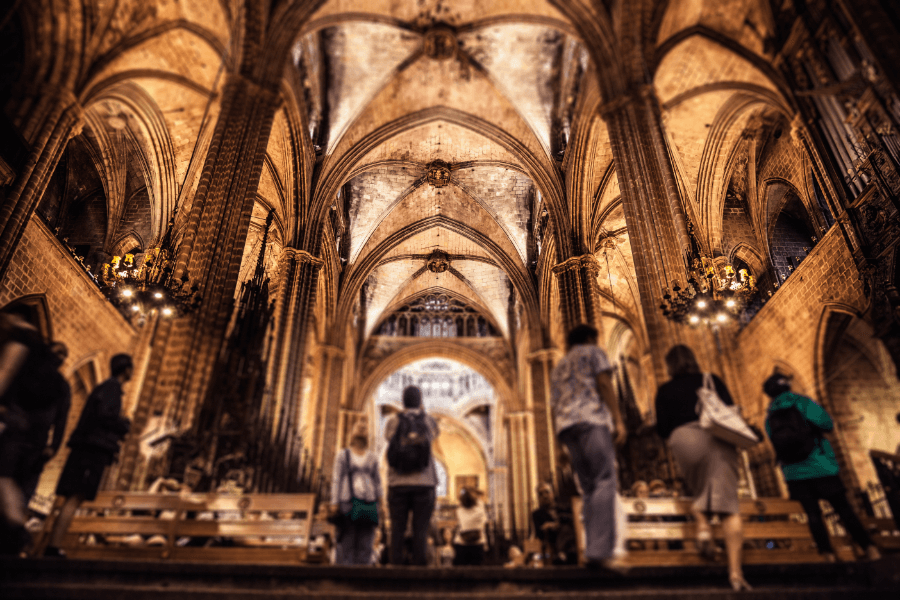
But although the cathedral is without question the city’s most impressive medieval monument, ironically its iconic facade actually dates from the late 19th century, when local bigwigs decided that the bare facade wasn’t befitting of the cathedral’s dignity. Don’t hold its relative modernity against it, however: the stunning design features grimacing gargoyles guarding the cathedral’s deeply recessed entrance portals and mullioned windows in riotous ensemble.
The cathedral’s spare, elegant interior is a perfect example of the Catalan Gothic style, with beautiful slender columns supporting the impressive ceiling. Look out for the beautifully sculpted 14th-century wooden choir stalls, and take a peek into the cathedral’s crypt for a glimpse of Eulalia’s alabaster tomb, decorated by Pisan sculptors with images of the saint’s grisly martyrdom. To get the full, top-to-bottom experience of the cathedral, take the lift up to the roof for sweeping views across Barcelona.
Basilica of Santa Maria del Mar
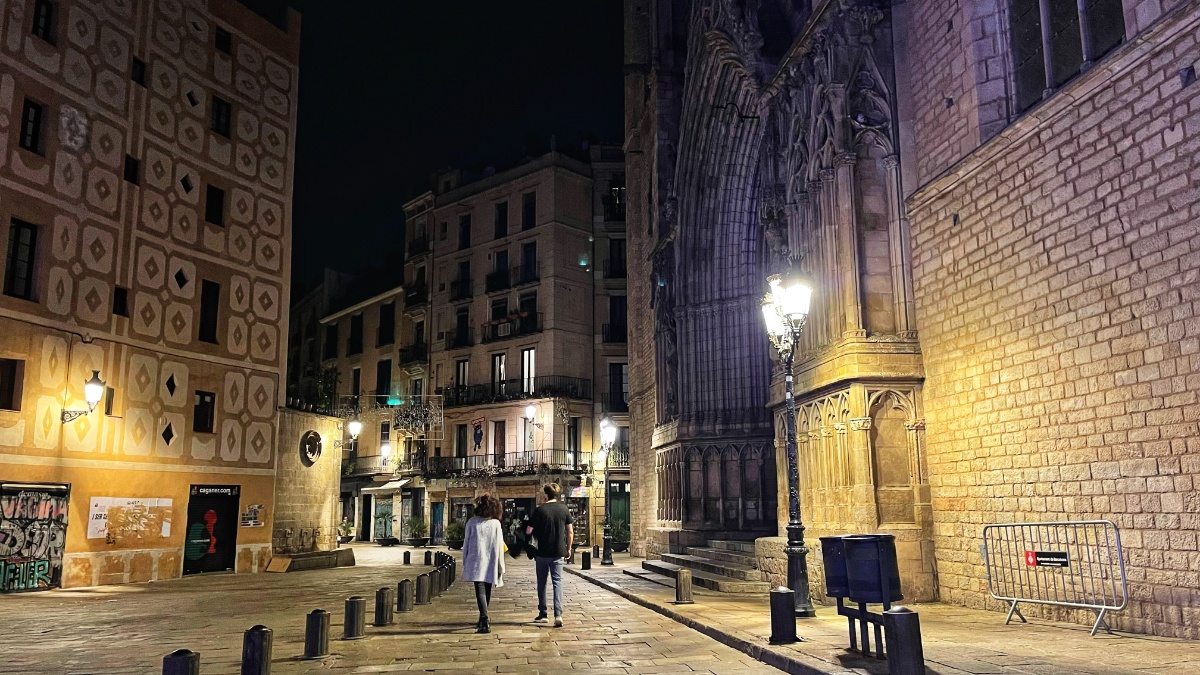
Magnificent Santa Maria del Mar is perhaps the ultimate expression of Barcelona’s medieval prosperity as capital of the Principality of Catalonia, one of the era’s great mercantile and commercial powers. The grandeur of this 14th-century basilica strikes you immediately as it rises impressively from the Passeig del Born, a textbook Gothic confection of towers and buttresses, elaborate portals, pointed arches, and, of course, an impressive rose window.
The basilica was begun in 1329 to designs by architects Berenguer de Montagut and Ramon Despuig, and the church’s extraordinary harmony and stylistic consistency can be attributed to the rapid construction time-frame - completed in just 54 years, this was a record-breaking pace in an era where the construction of cathedrals often took centuries. Apparently the local community pitched in, taking up their shovels to aid the building effort: porters and dockworkers helped to transport the vast quantities of stone required to build the church from the quarries across town on Montjuïc hill. Look out for sculptures of the plucky stevedores decorating the entrance portal.
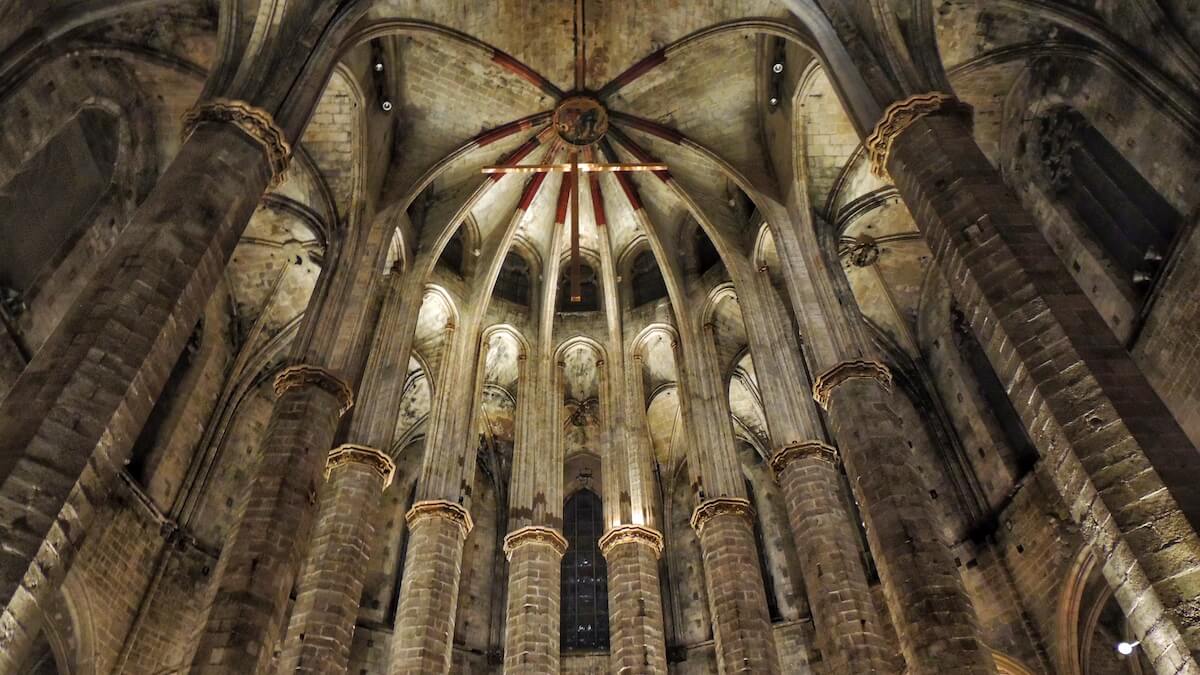
Inside, the basilica unfolds via three naves of equal height and width. The interior boasts extremely elegant proportions thanks to the rows of extremely tall, delicate pillars that carry the exposed rib-vaults of the distant ceiling. There are few decorative flourishes in here - the basiica’s pleasing beauty relies almost entirely on the gracious architecture and flowing sense of space. The stained glass windows perforating the clerestory and apse gives the impression of even more space and light. Make the climb to the basilica’s roof for unrivalled views across all of Barcelona and the glittering waters of the Mediterranean beyond.
Basílica de Santa Maria del Pi
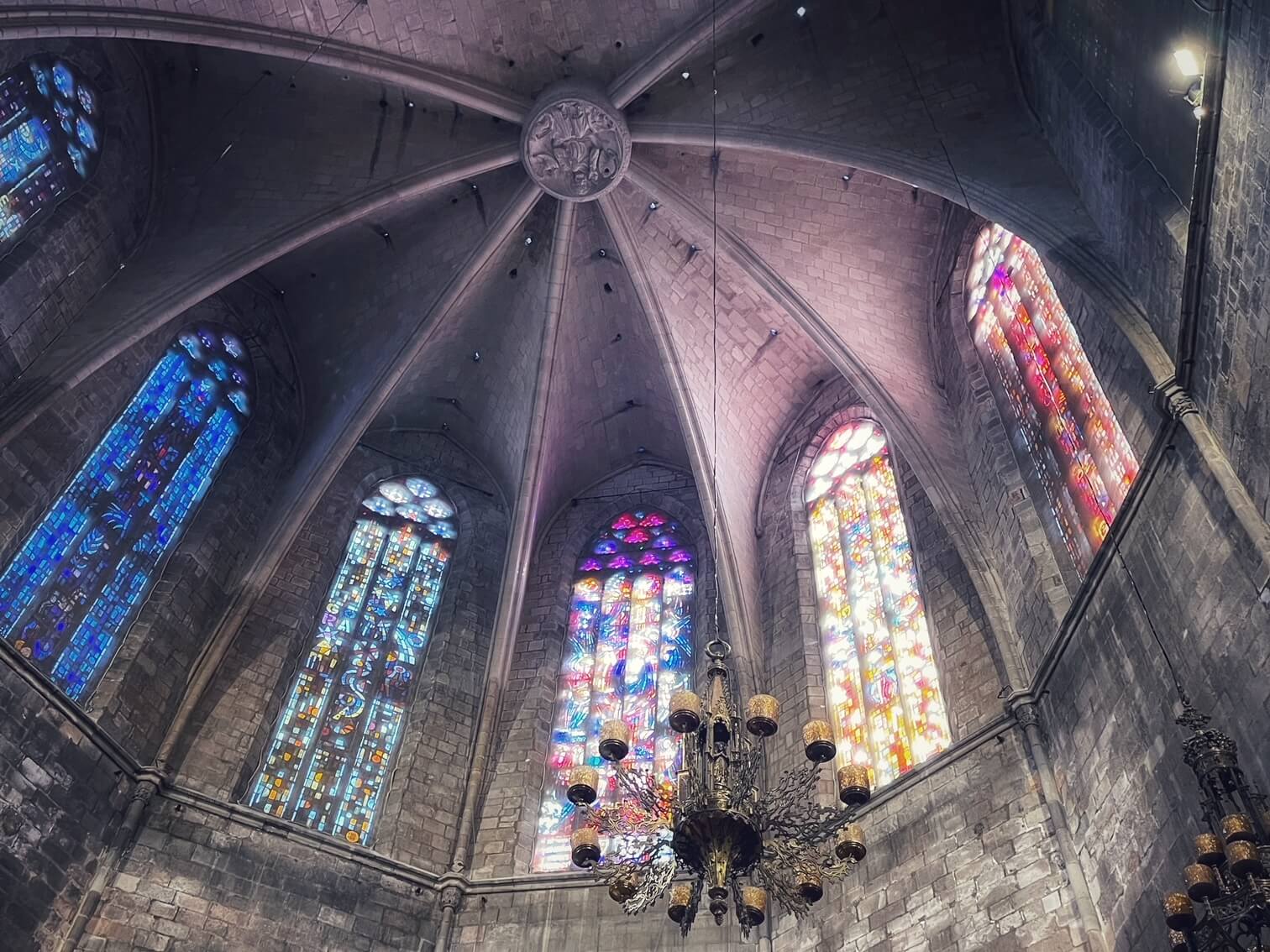
Immersed in the picturesque tangle of medieval streets that make up Barcelona’s Barri Gòtic, the Basilica of Santa Maria del Pi is one of the foremost examples of the Catalan Gothic style in the city. The church is located between the picturesque squares of Plaça del Pi and Plaça Sant Josep Oriol, where tables spill onto the sidewalk from local cafes and painters display their canvases at an art fair every weekend. A house of worship has probably existed on the site since as far back as the 5th century, and a Romanesque church is recorded here from the 900s.
According to legend, a local fisherman had a vision of the Virgin Mary in a pine tree he was preparing to fell in order to build a boat, and he resolved to build a chapel here to commemorate the miracle. The pine tree in question, pi in Catalan, gives the church its name. Construction on the current much grander edifice took place between the years 1319 and 1391, with a lengthy hiatus caused by the devastations of the Black Death in 1348. The hulking exterior of the basilica itself - supported by meaty buttresses - is dominated by a spectacular rose window, the largest of its kind in Catalonia. After the original window was destroyed during the Spanish Civil War, an exact replica was installed by Gaudí collaborator Josep Maria Jujol.
A recessed Gothic arch and tympanum mark the main entrance portal. Inside, the massive, barn-like single nave is topped by a soaring vaulted ceiling. Lancet windows with Baroque stained glass ornamentation puncture the apse wall above the altar, flooding the interior with beautiful coloured light.
Sant Pau del Camp
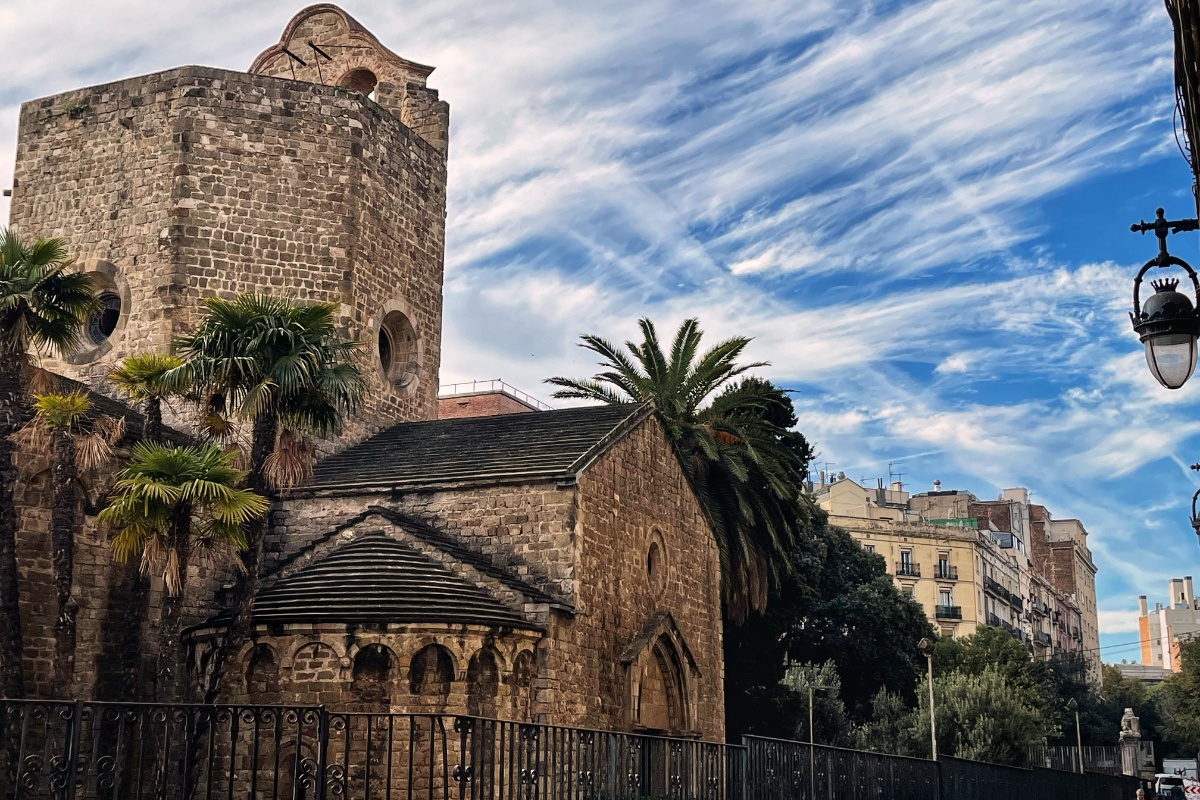
We’re cheating a bit with this one, as Sant Pau del Camp isn’t strictly speaking in the Catalan Gothic style at all - one of the oldest surviving churches in Barcelona, 9th-century Sant Pau is actually the finest example of Romanesque architecture in the city. With its lovely cloisters and gardens, the church is a blissfully tranquil little corner of Barcelona.
The church and adjoining monastery was clearly an important complex in medieval Barcelona, attested to by the grave markers of eminent Catalan aristocrats located in the church. The oldest is that of Count Wilfredo II, Guifré II Borrell, the presumptive founder of the monastery who died in 911. Moorish troops sacked and destroyed the first monastery 80 years later, and the subsequent 11th-century rebuild is the edifice that we see today.
The rudimentary interior takes the shape of a Greek cross ground plan with a single nave and barrel-vaulted roof, but it's the stunning cloister that really takes the breath away with its delicate arcades and complex carved capitals.
Basílica dels Sants Màrtirs Just i Pastor

Dedicated to the young early-Christian martyrs Justus and Pastor, according to local tradition this is the oldest church in Barcelona. When the French king Louis the Pious captured Barcelona from the Islamic Emirate of Córdoba in 801, he set about reconstructing the city’s churches. As part of the building campaign he commissioned a church dedicated to Justus and Pastor in the heart of the city. Nothing remains of Louis’ Romanesque design, but a magnificent Gothic basilica rose to replace it midway through the 14th century.
Works on the austere but impressive edifice took over 200 years, and saw the contributions of many of the city’s most eminent architects and master builders. The single-naved interior leading to a polygonal apse is a model of medieval restraint. Six chapels lead off the nave, including one dedicated to the Holy Cross which is home to a stunning 16th-century altarpiece by Pere Nunyes depicting the Passion of Christ.
A climb up to the top of the basilica’s 16th-century belltower is obligatory; a narrow spiral stairwell leads to the top of the 35-metre tall tower, where unforgettable panoramic views of the city extend out in all directions.
We hope you enjoyed our guide to Barcelona's most beautiful Gothic churches! Through Eternity Tours offer a range of expert-led guided itineraries in the Catalan capital, including tours of the Gothic Quarter. To see the city at its best, join us on our Barcelona tours!
